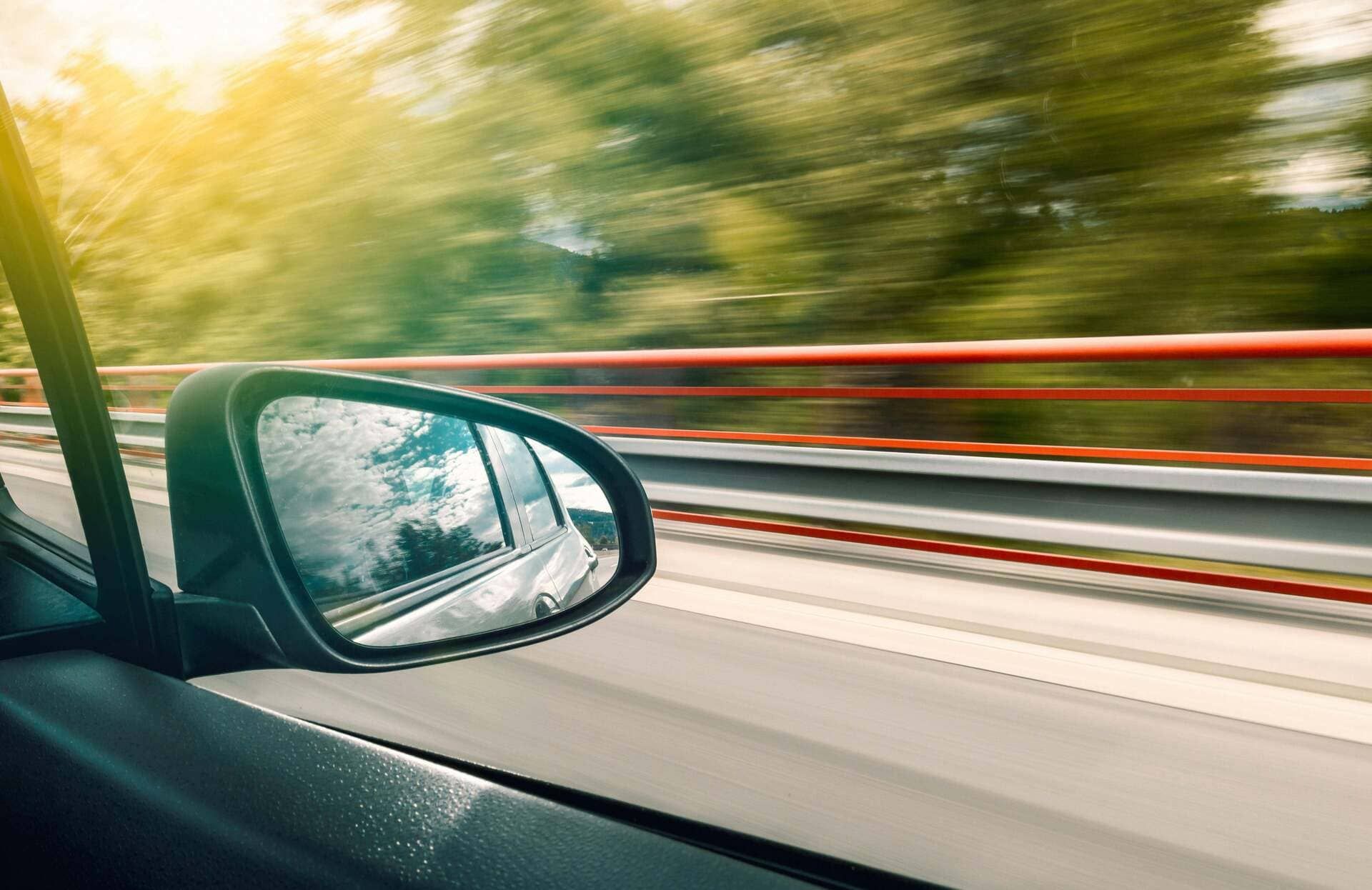Does Driving Fast Release Dopamine? Understanding the Thrill Behind Speed

Sarah Johnson, MD

Why do some people like to drive fast? They want to go out on the open road. The roar of the engine is a call. For a lot of people, pressing the gas pedal gives them a rush. It is a sudden rush of pure joy.
This feeling is more than just fun. It is a biological response that goes deep. Your brain is working hard to help you have the experience. It lets out strong chemicals that change how you feel. So, does driving fast release dopamine? People often call this neurotransmitter the "pleasure chemical" in the brain. Yes, the answer is clear. But the whole story is much more interesting and complicated.
- What Is Dopamine and Why Does It Matter?
- The Science of Speed and Dopamine Release
- Why Do Some People Crave Speed More Than Others?
- Benefits People Associate With Driving Fast
- Risks of Chasing Dopamine Through Speed
- Safer Alternatives to Get a Dopamine Boost
- FAQ — Does Driving Fast Release Dopamine?
This article talks about the science behind the thrill. We will look into the minds of people who want to go fast. Finally, we'll talk about safe ways to deal with this strong desire for excitement. For some, it's a powerful way to manage stress and escape daily pressures. Others may find that exploring their mental health with an AI Mental Health offers a different kind of release.
What Is Dopamine and Why Does It Matter?
Dopamine is a very important neurotransmitter. It sends chemical messages in your brain. It's not just a molecule that makes you happy. Its main job is to motivate and reward. It makes you want to look for experiences that will make you happy. Dopamine levels rise when you look forward to something good. It could be food, a job well done, or a fast car. It makes you want to get the reward. This leads many to ask: does driving fast release dopamine?
This system is very important for staying alive. It encourages good habits, like eating. But modern stimulants also take it over. Driving fast is a strong example.Dopamine makes you feel very focused. It gives you a wave of happy satisfaction. This makes you want to do it again. It drives desire.
This neurochemical loop is similar to what happens during dopamine and overstimulation — when constant stimulation trains the brain to seek bigger thrills for the same dopamine reward.
better with Soula

Support for every woman:
✅ A Personalized Plan to reduce anxiety and overthinking
✅ 24/7 Emotional Support whenever you need it Cycle-Aligned Mental Health Tracking — monitor your mood and symptoms in sync with your period
✅ Real-Time Insights into your energy levels and emotional state
✅ Bite-Sized Exercises to help you return to a calm, balanced state — anytime, anywhere
The Science of Speed and Dopamine Release
Driving fast makes a strong mix of neurochemicals. First, your body lets out adrenaline. This hormone makes you want to fight or run away. Your heart rate goes up. Your senses get sharper.
This process directly answers the question: does driving fast release dopamine? After this rush of adrenaline, there is often a release of dopamine. Your brain knows that the stimulation is strong. It sends a message that the experience was good and worth remembering. The brain's reward system is turned on.
This mix is very strong. The physical jolt comes from adrenaline. Dopamine gives the good reinforcement. When you put them together, they make the classic thrill of speed.
This effect is similar to other activities that get you excited. Extreme sports cause the same reaction. The science confirms that does driving fast release dopamine is a valid question, with a definitive yes. Competitive video games and gambling can also do this. The brain reacts the same way to different highs.
The rush may go away after a while. Your brain gets used to the stimulus. To get the same thrill, you might have to drive faster. This is a process called tolerance.
This tolerance effect is a hallmark of sensitivity to overstimulation, where the brain gradually adapts to high dopamine activity and craves stronger triggers to feel the same excitement.
According to neuroscience research, these reward loops are deeply tied to dopamine regulation and can influence long-term motivation and risk perception.
Why Do Some People Crave Speed More Than Others?
Not everyone feels the same need for speed. A big part of it is personality. People who like to try new things often score high in novelty-seeking traits. They always want new and exciting things to happen to them. This directly relates to the chemical question of does driving fast release dopamine.
Some scientists call this kind of person "Type T," which stands for "Thrill." These people might have different brain chemicals. Their dopamine systems could be less sensitive. They need bigger things to feel the same reward. For them, the answer to does driving fast release dopamine is a powerful yes, driving their need for intense stimuli.
Cultural factors are also very important. People often think of speed as a sign of freedom and rebellion. Movies and other forms of media praise the lone driver. This can change a biological drive into a cultural identity.
For some, it's about having power. Driving a high-performance car makes you feel powerful. It is a short break from the rules of everyday life. The car becomes an extension of their will.
Benefits People Associate With Driving Fast
People chase the speed high because they think it will help them. A temporary mood boost is the most common. The rush of dopamine can make you forget about being bored or sad. It is a strong distraction.
There is a deep feeling of freedom. The road ahead is the only thing that matters. Daily worries fade into the background. This gives you a way to really get away from your thoughts.
When you drive fast, you have to pay close attention. You have to pay full attention to it. This forced mindfulness can help clear your mind. You can't think about other things while you're going fast around a turn. For a lot of people, it's also a social event. People in car communities get along because they all love performance. The excitement is even greater when you share it with someone else. It brings people together and makes them feel like they belong.
Risks of Chasing Dopamine Through Speed
There are very high risks involved in this pursuit. There are immediate legal consequences. Fines for speeding are very high. If you break the law more than once, you could lose your license or go to jail.
The risks to your health are the worst. You never know what will happen on public roads. One mistake at high speed can be very bad. It puts your life and the lives of others in danger.
There is a risk to mental health. The brain can form habits that are similar to addiction. You might start to need the excitement to feel good. This can make people act more and more recklessly.
The reward is always for a short time. The crash that comes after the dopamine high can feel bad. This can start a cycle of chasing that doesn't take long-term harm into account. The effects last forever.
Safer Alternatives to Get a Dopamine Boost
You can safely channel this need for speed. Days at the track and performance driving schools are great. They let you drive fast in a safe, controlled way. You can find out what a car can do without putting anyone else in danger. This controlled environment still allows you to explore the question: does driving fast release dopamine? Dopamine can also be released by other things. A good example is doing a lot of physical activity. A long run or a hard bike ride can make you feel great. It is a good substitute. These activities affirm that does driving fast release dopamine is part of a broader pattern of thrill-seeking.
Creative hobbies also activate the reward system. Playing a new song on an instrument gives you a rush of dopamine. So does finishing a hard project or learning how to make a hard recipe. Drive carefully on public roads. Pay attention to how smooth your inputs are. Enjoy the beat of the road. Be thankful for how well the car was made. This can be fun without being risky.
Learning to manage your dopamine response helps prevent chronic overstimulation — a state where constant high-reward activities make it harder to feel joy from everyday experiences.
Understanding that does driving fast release dopamine helps explain the urge, but finding safer outlets is key.
FAQ — Does Driving Fast Release Dopamine?
How long does the dopamine rush from driving fast last?
According to neuroscience research, the dopamine rush from speed usually lasts only a few minutes, followed by a gradual return to baseline. The intensity and duration depend on individual sensitivity, stress levels, and how often you chase high-stimulation experiences.
Does dopamine make people drive faster or take more risks?
Dopamine increases motivation and reward-seeking behavior, which can influence how people take risks. Studies show that higher dopamine activity may lead to greater thrill-seeking, but the effect varies greatly among individuals.
Can personality affect dopamine response to speed?
Yes. Research suggests that people with “novelty-seeking” traits or lower baseline dopamine sensitivity tend to crave more stimulation. They may experience a stronger dopamine release while driving fast, similar to those who enjoy extreme sports.
Is the dopamine response from speed different for men and women?
Some studies indicate slight gender differences in dopamine regulation. Men often show higher dopamine-related activity in reward circuits during risk-taking, while women may experience more balanced emotional responses. However, results vary widely between individuals.
Can frequent speeding change your brain’s dopamine sensitivity?
Yes. Repeated exposure to high-intensity thrills can reduce dopamine receptor sensitivity, making everyday activities feel less rewarding. This tolerance effect is similar to what happens with other behavioral highs like gambling or excessive gaming.
Is the dopamine rush from driving fast similar to other thrills?
Very much so. The neurochemical pattern resembles what happens during skydiving, racing, or intense gaming — a mix of adrenaline, dopamine, and endorphins that activate the brain’s reward system. It’s the body’s natural way of reinforcing excitement and focus.
Can mindfulness help manage dopamine cravings from thrill-seeking?
Yes. Mindfulness helps balance dopamine by teaching awareness of cravings and body sensations. Studies show that mindful breathing and grounding techniques can reduce the urge for high-stimulation behaviors like speeding.
What are healthier ways to trigger dopamine safely?
Exercise, creative projects, music, and social bonding all increase dopamine naturally. These activities offer similar satisfaction without the risks of reckless driving, helping maintain long-term balance in the brain’s reward system.
Does everyone experience the same dopamine rush from speed?
No. Dopamine responses are highly individual. Genetics, stress hormones, and emotional state all influence how strongly the brain reacts to speed. For some, the thrill is powerful; for others, it’s mild or fleeting.
Think about autocross or track days as a safe way to go fast. These controlled environments are the ideal setting to explore the thrill, providing a clear and affirmative answer to does driving fast release dopamine without endangering public roads.














